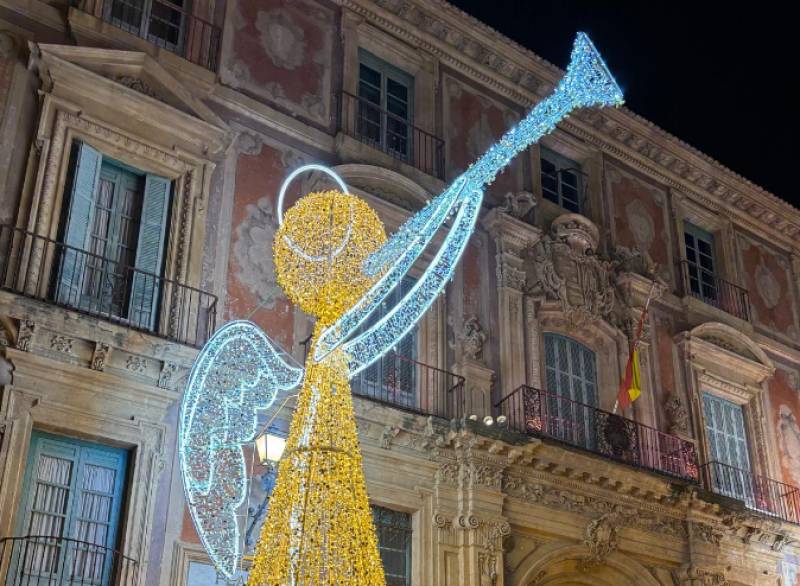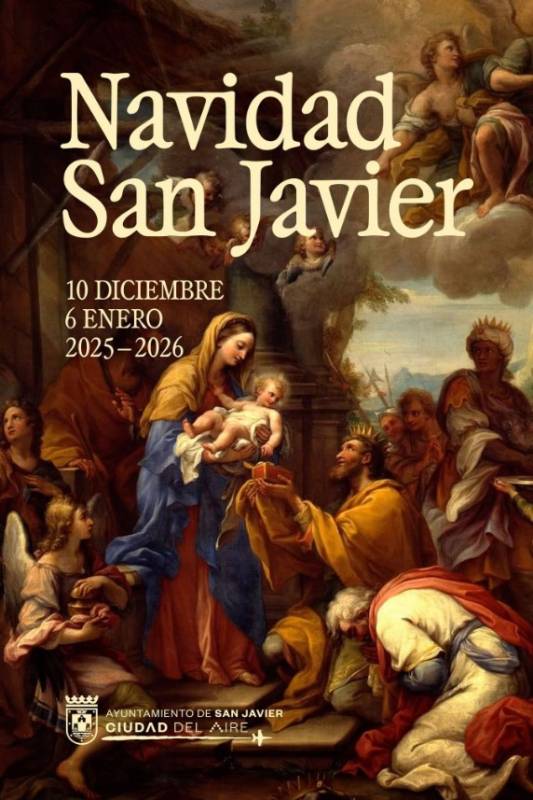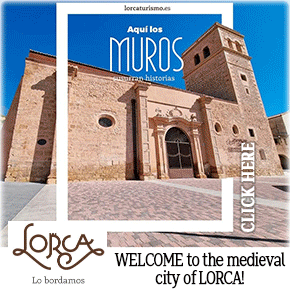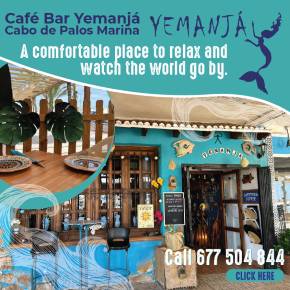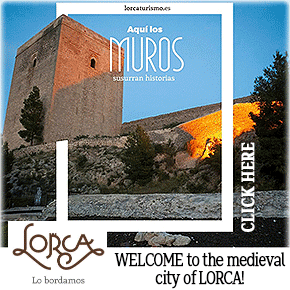- Region
- Vega baja
- Marina Alta
- Marina Baixa
- Alicante
- Baix Vinalopo
- Alto & Mitja Vinalopo
-
ALL TOWNS
- ALICANTE TOWNS
- Albatera
- Alfaz Del Pi
- Alicante City
- Alcoy
- Almoradi
- Benitatxell
- Bigastro
- Benferri
- Benidorm
- Calosa de Segura
- Calpe
- Catral
- Costa Blanca
- Cox
- Daya Vieja
- Denia
- Elche
- Elda
- Granja de Rocamora
- Guardamar del Segura
- Jacarilla
- Los Montesinos
- Orihuela
- Pedreguer
- Pilar de Horadada
- Playa Flamenca
- Quesada
- Rafal
- Redovan
- Rojales
- San Isidro
- Torrevieja
- Comunidad Valenciana
March 16 Guided tour of the Convento de Santa Ana just outside Jumilla
A rare chance to visit the mountain monastery overlooking the Jumilla countryside
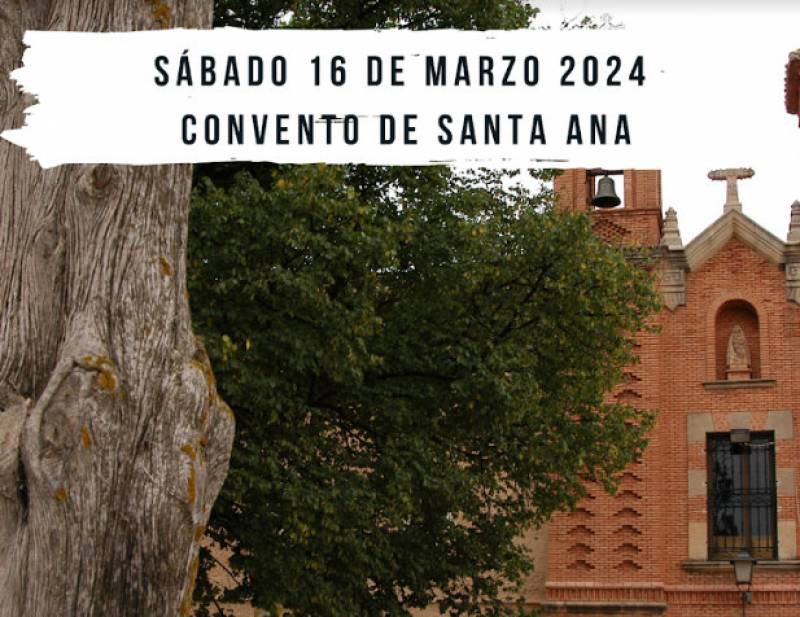 The Convento de Santa Ana del Monte stands high up in the mountains to the south of Jumilla, affording excellent views out over the town and further, and is a popular destination among walkers, cyclists and picnickers, but it is also home to important works of art which are not always on view to the general public.
The Convento de Santa Ana del Monte stands high up in the mountains to the south of Jumilla, affording excellent views out over the town and further, and is a popular destination among walkers, cyclists and picnickers, but it is also home to important works of art which are not always on view to the general public.
The building is still in use as a church, with Mass being held almost every day of the week, and the site has been of religious significance to the local population since at least 1450, when the first place of worship of which there is any record in this area was devoted to Santa Ana.
Among the most prized possessions of the monastery is the figure of “Cristo Amarrado a la Columna” (Christ Tied to the Column) by the master of Murcia religious sculpture, Francisco Salzillo. This was acquired in 1755, and it is also possible to see the 17th-century “Cristo de la Reja”.
The chapel housing Salzillo’s statue is also decorated with four large canvases by the artist Manuel Muñoz Barberán, as well as a sculpture depicting the Franciscan Hibernón by the studio of Roque López (18th century).
Two reliquaries date from 1613 and contain objects brought by the Marqués de Villena from Italy, and the altar screen, atop which stands a figure of Santa Ana, is from the 15th century. As well as all these items, the museum in the building contains numerous other works of art and curiosities.
The tour on March 16 begins at 16.30 at the entrance to the monastery and is free of charge. Reservations can be made online here or via the tourist office of Jumilla.
And after the visit, enjoy a trip to the historic town centre and a tasty lunch accompanied by some of the local fine wine!
When visiting Jumilla don’t forget to make your first port of call the local tourist office (Plaza del Rollo, 1, telephone 968 780237 / 663 300779, email oficinaturismo@jumilla.org.
For more local events, news and visiting information go to the home page of Jumilla Today.
staff.inc.ali
Oficina de Turismo Jumilla
The tourist office in the centre of Jumilla is easily found by driving straight into the centre of the town along the Avenida de Murcia and following the signposts. The tourist office is alongside the Parque de Don Albano Martínez Molina, where there are a number of parking spaces.
Jumilla, in the north of the Region of Murcia, has become internationally famous over recent decades due to the quality of the wines produced in the municipality, and wine tourism has begun to attract visitors from other parts of Spain and the rest of Europe.
The tourist office is happy to provide a range of maps and leaflets showing the different bodegas which can be visited within the municipality. Some of these form part of the Rutas del Vino de Jumilla, the Jumilla wine route, and can either be visited as a guided tour or sell their produce directly to the public.(see feed below for more details)
However, the town and the surrounding countryside have plenty of other attractions for visitors, and the popularity of Jumilla wines is leading more and more people to discover other facets of the tenth largest municipality in Spain.

These include the spectacular countryside and birdlife in the Sierra del Carche, the historic remains which range from cave paintings and a Roman mausoleum to the castle, the Iglesia de Santiago, the Town Hall and the Teatro Vico, and the gastronomy: rich stews are accompanied not only by the wines of the area but also by Jumilla pears, which also enjoy Denomination of Origin status.
Tourism in Jumilla is not as seasonal as it is in the coastal areas of the Region of Murcia, but the town is at its liveliest during the fiestas in Holy Week and the August Fair, which incorporates the grape harvest celebrations and the Moors and Christians parades.
The Altiplano of the Region of Murcia, which consists of the municipalities of Jumilla and Yecla, is only just over an hour by car from the Mar Menor, Cartagena, Mazarrón, Torrevieja and Alicante, and anyone wishing to visit real inland Spain and world-class wineries is advised to include Jumilla in their schedule.
Opening hours
Summer
Tuesday to Friday from 10am to 2pm
Saturday and Sunday 10am to 2pm
Monday closed
Winter
Tuesday to Friday from 10am to 2pm and 5pm to 7pm
Saturday and Sunday 10am to 2pm
Monday closed
Click for full information about visiting the Jumilla municipality and its wine bodegas: Jumilla section















